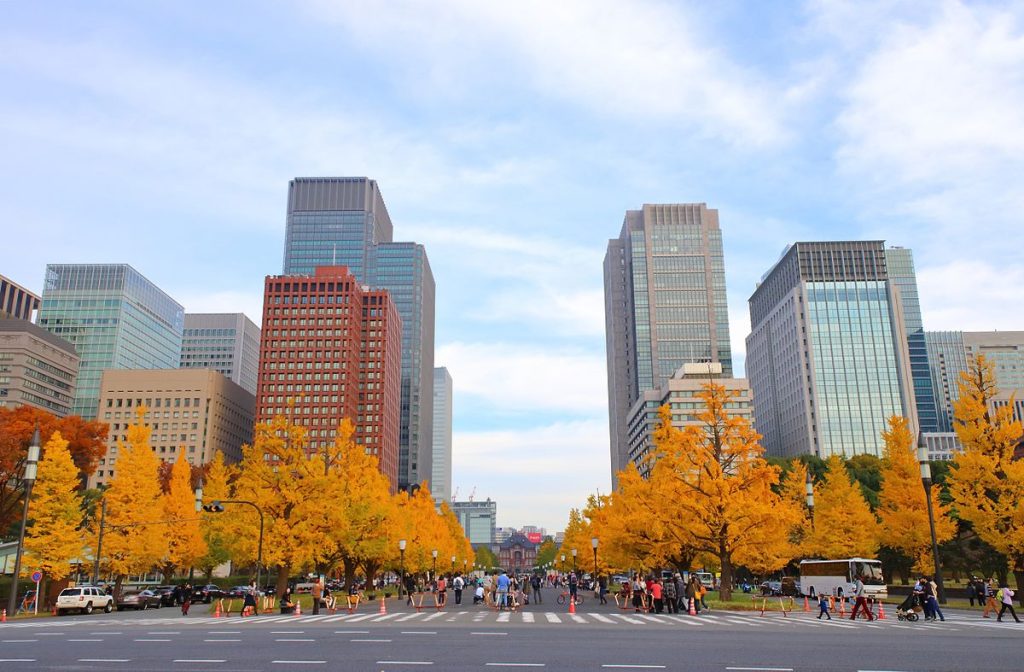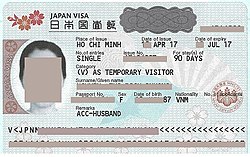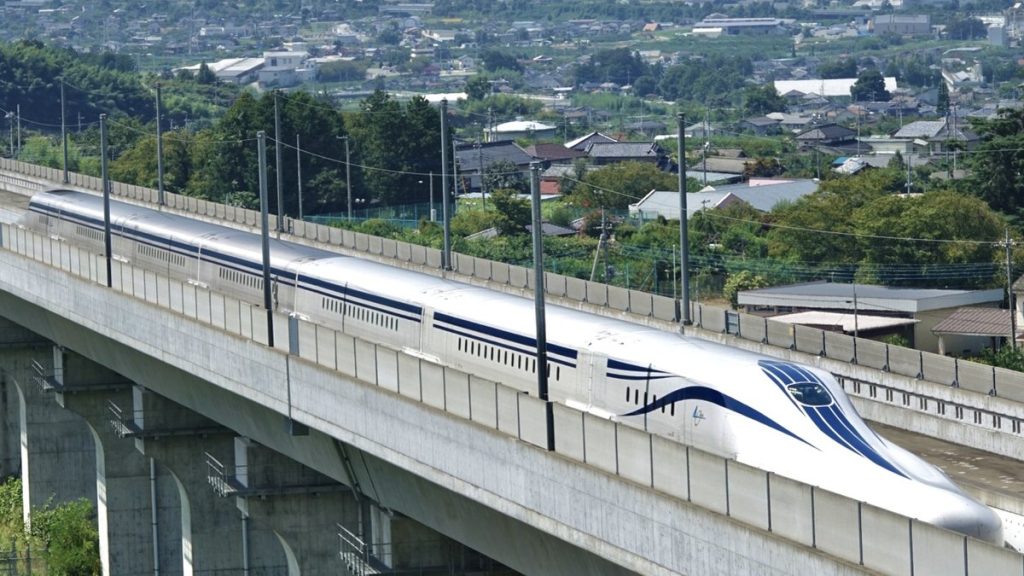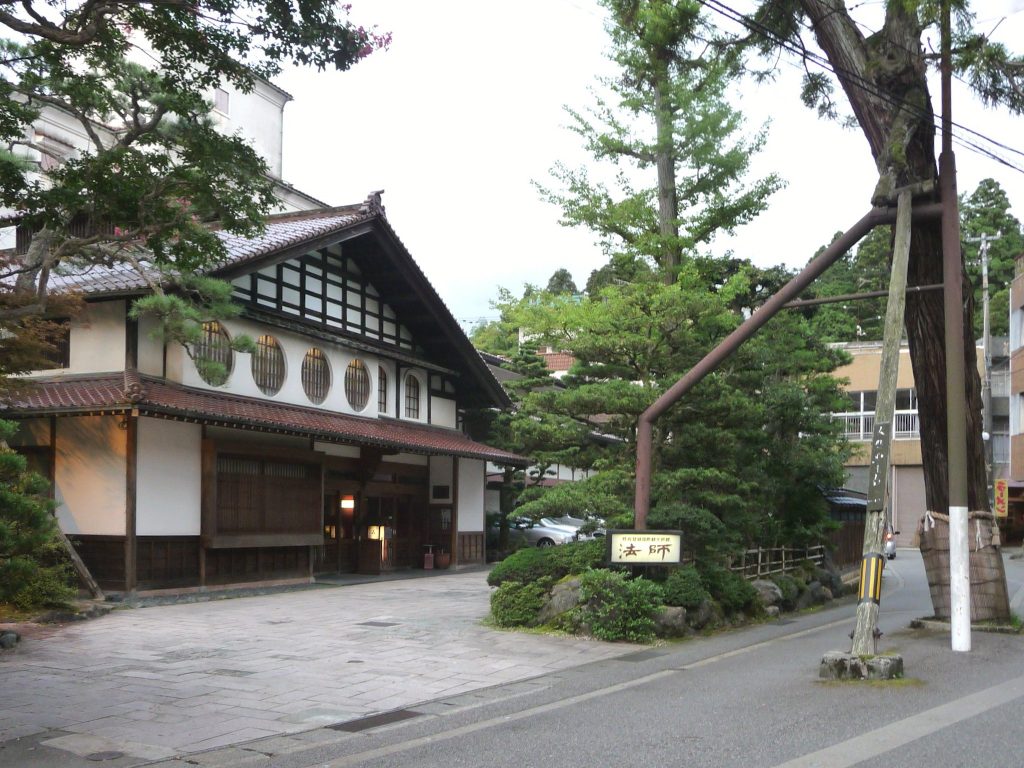Imagine watching the sunrise over Mount Fuji and ending the day under neon Tokyo lights. Traveling to Japan from India is more accessible than ever in 2025. You might be an avid anime fan or a culture enthusiast – either way, Japan’s blend of tradition and technology beckons. This Japan trip planner is your friendly guide through the essentials: Japan travel packages, costs, itineraries, visa process, and those must-do experiences. Each tip comes from real insights, so planning your travel to Japan from India feels as thrilling as the journey itself.
Cost of Japan Travel Packages from India in 2025
One of the first questions is always about budget. How much will a Japan tour cost from India? The good news is that Japan offers a range of options for different budgets. Here’s a breakdown of what you can expect to spend for a Japan tour package per person in 2025:
- Budget Trips (7–9 days): Around ₹1,00,000 – ₹1,50,000. This typically covers group Japan trip packages with 3-star stays and maybe a couple of guided tours. It’s perfect if you’re watching your wallet but still want a rich experience.
- Mid-Range Trips (9–12 days): Approximately ₹1,50,000 – ₹2,50,000. These Japan tour packages offer a mix of 4-star city hotels and some countryside experiences. You get more inclusions (like a special dinner or a cultural show) for a bit more cost.
- Luxury Packages (up to 2 weeks or more): ₹2,50,000 – ₹4,50,000+ for private tours, 5-star ryokans (traditional inns), and unique seasonal events. This is the way to go if you want concierge-style travel with all the bells and whistles.

What makes up these costs? Here’s a quick look at major travel expenses in a typical package:
- Flights: ₹50,000 – ₹1,20,000 for a round-trip flight from India to Japan. Booking early can snag you better deals. Direct flights (from Delhi/Mumbai to Tokyo) tend to be on the higher end, while one-stop flights (via Bangkok or Singapore) might save some money.
- Accommodation: ₹5,000 – ₹25,000 per night. Capsule hotels and hostels are great budget options in big cities. Mid-range travelers often choose business hotels (~₹7,000–₹12,000 per night) that are clean and efficient. Splurge travelers can opt for five-star hotels or luxury ryokans with on-site onsens (hot springs).
- Food: ₹1,000 – ₹4,000 per day. Eating in Japan can be affordable if you dine like a local – think hearty bowls of ramen for ₹600 or convenience-store (konbini) meals for a few hundred yen. Of course, if you’re eyeing a Kobe beef dinner or fine sushi omakase, budget on the higher side. Vegetarian Indian food is also becoming easier to find in Japan’s big cities, with some ramen shops and even Indian restaurants catering to desi spice cravings.
- Transportation: ₹500 – ₹2,500 per day for local transport. Japan’s public transport is incredibly efficient. A short metro ride in Tokyo might cost ₹100–₹150. Taxis are pricey (a 5 km ride can be ₹2,000+), so many travelers stick to trains and buses. We’ll talk about the JR Pass in a moment – it’s a huge money-saver for intercity travel.
- Attractions & Tours: ₹2,000 – ₹10,000 per day Many temples and parks are free or have a token entry fee (₹300–₹500). Guided Tokyo tours or Kyoto tours will cost more – for example, a full-day guided city tour or a Mt. Fuji day trip from Tokyo might be around ₹8,000 – ₹10,000 including transport.
Tip: Book your package early and look out for offseason deals. Some tour companies offer early-bird discounts on Japan travel packages from India, especially for travel in January or February (the winter low season). Smart timing can put some yen back in your pocket
7-Day and 10-Day Japan Tours
It’s story time – let’s map out your Japan adventure! Below are two sample itineraries: one for a week-long trip and another for about ten days. These cover classic destinations like Tokyo, Kyoto, Osaka, Hakone, and of course Mt. Fuji, giving you a taste of Japan’s urban excitement and natural beauty.
7-Day Japan Tour Itinerary: (Tokyo, Mt. Fuji/Hakone, Kyoto & Osaka)
- Day 1: Arrive in Tokyo – Land in the ultra-modern capital. Explore your neighborhood on foot. In the evening, visit Shibuya Crossing to feel the city’s energy, and maybe pop into a ramen-ya for your first slurp of authentic ramen.
- Day 2: Tokyo City Highlights – Start at Senso-ji Temple in Asakusa for a touch of old Tokyo. Next, join a local Tokyo tour (or self-guide) around spots like the Meiji Shrine and Harajuku for culture and cosplay. In Akihabara, indulge your inner tech geek or anime lover. Pro tip: Use a Suica metro card to zip around the city efficiently.
- Day 3: Mt. Fuji Day Trip from Tokyo – Rise early for a full-day excursion to Fuji-san! Many travelers do a Mt. Fuji day trip from Tokyo via Hakone. You’ll take a train or bus to Hakone, cruise on Lake Ashi, and ride the ropeway for a chance to see Mount Fuji’s iconic peak (weather permitting). It’s a day of natural beauty and hot springs – consider dipping your feet in an ashiyu (foot bath) with a view of Fuji. (Alternate option: day trip to Nikko for UNESCO-listed shrines and waterfalls.)
- Day 4: Bullet Train to Kyoto – Experience the Shinkansen (bullet train) as you zoom to Kyoto in ~2.5 hours. In Kyoto, step back in time: visit Kinkaku-ji (Golden Pavilion) and stroll through Arashiyama’s bamboo groves. Come evening, walk the lantern-lit streets of Gion in hopes of spotting a geisha.
- Day 5: Kyoto’s Cultural Delights – Dive deeper into Kyoto. Start at Fushimi Inari Taisha, where thousands of torii gates line a mystical mountain path. Try a tea ceremony or a cooking class as part of a Kyoto tour to truly immerse yourself. By afternoon, visit Nara (just 35 minutes from Kyoto) to feed the friendly deer in Nara Park and see Todai-ji Temple’s giant Buddha. Return to Kyoto by evening.
- Day 6: Kyoto to Osaka – In the morning, consider a quick trip to Himeji Castle (if you’re keen – it’s Japan’s most famous castle, about 1 hour from Kyoto by train). Otherwise, head straight to Osaka. Osaka is all about food and fun – spend the afternoon in Osaka’s Dotonbori district, tasting takoyaki (octopus balls) and okonomiyaki (savory pancake). In the night, the neon-lit Dotonbori canal area is the perfect backdrop for your Japan memories.
- Day 7: Osaka & Departure – If you have time, visit Osaka Castle or enjoy the thrills of Universal Studios Japan. Bid farewell to Japan as you fly out from Osaka (KIX) or take a short flight/train back to Tokyo for your return flight. You’ll leave with a camera full of photos and a heart full of stories.
10-Day Japan Tour Itinerary: (Tokyo, Hakone, Kyoto, Osaka & More)
This extended trip lets you travel at a more relaxed pace or add another city.
- Days 1-3: Tokyo & Surroundings – Same as the 7-day plan, but with an extra day to breathe. You can use the extra day to explore more of Tokyo’s neighborhoods (maybe trendy Shibuya and peaceful Ueno Park) or take additional day trips from Tokyo. Popular picks include Kamakura, a seaside town with Great Buddha statue and surf vibes, or Nikko for its ornate Toshogu Shrine and nature trails.
- Days 4-6: Kyoto (via Hakone) – From Tokyo, head to Hakone for a night before Kyoto. Hakone offers ryokan stays with onsen baths and stunning views of Mount Fuji. It’s a romantic and relaxing stop. After Hakone, continue to Kyoto as in the 7-day itinerary, but stretch Kyoto into two full days. This gives you time for offbeat gems like the Philosopher’s Path or a hike at Kurama-Kibune in Kyoto’s hills. In the evening, enjoy a Kyoto ryokan with private onsen if your budget allows – soaking in a personal hot spring bath after temple-hopping is pure bliss.
- Days 7-9: Osaka & Hiroshima – From Kyoto, a short train ride brings you to Osaka. Use Osaka as a base for 3 days. Spend one day in Osaka city (food and shopping in Namba, maybe Osaka Aquarium if you love marine life). On another day, take a shinkansen down to Hiroshima (approx 1.5 hours one-way) to pay respects at the Peace Memorial Park and Museum. It’s a humbling experience, but also uplifting to see how Hiroshima has rebuilt. Nearby Miyajima Island with its floating torii gate is a great add-on before returning to Osaka. The third day, consider a day trip to Universal Studios Japan in Osaka for some theme park fun or to Nara if you didn’t yet visit the bowing deer.
- Day 10: Departure from Osaka or Tokyo – If flying out of Osaka, enjoy a last bowl of udon or some souvenir shopping (green tea KitKats, anyone?) before you catch your flight. If you need to return to Tokyo for your flight, hop on a morning bullet train from Osaka to Tokyo (about 2.5 hours) and fly out in the evening. Say sayonara to Japan – for now. Chances are, you’ll be back!
(Feel free to mix and match. This is your Japan story! A travel consultant or Japan trip planner can help tailor these routes. And if you’re on a custom tour, many operators will adjust based on whether you love tech, history, or food.)
Japan Visa Process for Indians
The visa process for Japan has become smoother for Indian travelers recently. As of 2024, Japan introduced an electronic visa (eVisa) system for short-term tourism. Here’s what you need to know about getting a Japan visa in 2025:

- Visa Requirement: Yes, Indian citizens need a visa to travel to Japan. Thankfully, tourist visas are usually single-entry and valid for a 90-day stay.
- eVisa Availability: India is now part of Japan’s eVisa program. This means you can apply for a Japan visa online through authorized portals (Japan’s official eVisa website or VFS Global). You fill the form, upload documents, pay the fee online, and eventually receive a “Visa Issuance Notice” electronically. At the airport, you just show this digital visa approval on your phone – no more paper sticker needed!
- Documents Needed: The requirements are similar to most visa applications. You’ll need a valid passport (with at least 6 months validity), a completed visa application form, recent passport-size photographs, confirmed flight tickets, proof of accommodation (hotel bookings or tour itinerary), last 3 years’ IT-return copies, and bank statements to show financial capacity. If you’re going on a Japan tour package, the tour company often provides an invitation or itinerary to include.
- Visa Fees: For Indian tourists, the Japan visa fee is quite reasonable. It’s about INR 500 for a single-entry visa (this is the actual government fee) plus a service charge of around INR 950 if you apply via VFS So roughly ₹1,450 in total. Some Japan travel packages include this visa fee in their overall cost.
- Processing Time: Usually around 5–7 working days after submitting your application. It’s wise to apply at least 3–4 weeks before your trip. During peak travel seasons (like cherry blossom time in March-April), VFS centers in India can get crowded, so plan ahead. The eVisa system saves you a physical trip to the embassy, but you may still have to go for biometric submission if required.
- Visa Tips: Ensure all documents are complete – the Japanese authorities are particular. Show strong ties to India (like a letter from your employer or university, if applicable) to assure you’ll return. And remember, the visa is typically for tourism only; you shouldn’t engage in paid work on this visa.
Good news: Many Indian travelers get their Japan visa approved without hassle. Just double-check everything you submit. Once that’s done, you’re cleared for take-off!
Getting Around Japan: JR Pass and Transportation

Japan’s transportation is an attraction in itself – super-punctual trains, futuristic bullet trains, and spotless buses. As an Indian traveler, you’ll find getting around Japan convenient and efficient. Here are key points to know:
- Japan Rail Pass (JR Pass): This is a special pass for foreign tourists that offers unlimited travel on most JR trains (including Shinkansen bullet trains) for a fixed period. If you plan to city-hop, the JR Pass can save you a lot. A 7-day pass costs around ₹30,000, a 14-day ~ ₹48,000, and 21-day ~ ₹61,000. For example, a round-trip bullet train between Tokyo and Kyoto alone can be ~₹20,000, so the pass often pays off. Important: You must purchase (or reserve) the JR Pass before arriving in Japan (though a trial to sell it in Japan at a higher price is ongoing). You’ll get an exchange order to swap for the actual pass once in Japan.
- Trains and Metros: Within cities like Tokyo, Kyoto, or Osaka, you’ll use local trains, subways, and buses. Grab a Suica or Pasmo IC card (a prepaid travel smart card) as soon as you arrive – it’s like the Delhi Metro card, but works nationwide on most transit systems. Just tap and go on metros, buses, and even convenience stores. This saves you from buying tickets each time and often offers small fare discounts.
- Taxis and Apps: Taxis in Japan are impeccably clean and safe – the doors even open automatically! However, they are quite expensive for long distances. For short rides in city centers or late nights, they’re fine. Rideshare as we know it (Uber/Ola) isn’t widespread, but Uber in Japan often just hails a taxi for you. Stick to public transport when possible; it’s an experience to cherish.
- Domestic Flights: If your itinerary includes far-flung places (say, Tokyo and Hokkaido, or Osaka and Okinawa), domestic flights might make sense. Carriers like ANA and JAL have tourist passes or discounts. But for the classic Tokyo-Kyoto-Osaka triangle, trains are the way to go – city center to city center with no airport transfers or long check-ins.
- Buses: Intercity highway buses are a cheaper alternative to bullet trains, albeit slower. An overnight bus from Tokyo to Osaka can cost half of a Shinkansen ticket, and you save a night’s hotel cost. Willer Express is a popular bus service with English booking. If you’re young or adventurous, it’s a budget-friendly option. For most others, the speed and comfort of the Shinkansen usually win out!
Where to Stay: Hotels, Ryokans & Onsen Experiences

Your accommodations in Japan can greatly shape your experience. The country offers everything from cutting-edge modern hotels to charming traditional inns. Here’s how to choose:
- City Hotels (3-4 star): In Tokyo or Osaka, a business hotel is a solid mid-range choice. Rooms are compact (space is premium in Japanese cities) but have all amenities – en-suite bath, high-speed WiFi, and those famous high-tech toilets. Areas like Tokyo Station, Shinjuku, or Shibuya are convenient for sightseeing. Prices range from ₹7,000 to ₹15,000 per night for mid-range hotels. If you’re on Japan travel packages, these are likely the standard.
- Budget Stays: For backpacker-style travelers or youngsters, capsule hotels and hostels are fun and cheap. A capsule (essentially a pod bed in a dormitory setting) might be ₹2,000 – ₹3,000 per night. Hostels, including some family-run guesthouses, can also be in this range and offer a chance to meet fellow travelers. They’re safe, clean, and often in great locations. Just remember, in capsule hotels you trade space for novelty – not for the claustrophobic!
- Ryokans: A ryokan is a traditional Japanese inn, and staying in one even for a night is highly recommended. Ryokans feature tatami-matted rooms, futon beds, and often include a kaiseki (multi-course) dinner and breakfast. Many have communal baths or onsen. In Kyoto, you could stay in a centuries-old machiya townhouse turned ryokan. If privacy is a concern or you’re on a honeymoon, opt for a Kyoto ryokan with private onsen – this means you get your own personal hot spring bath, no sharing. It’s a splurge (prices can be ₹20,000+ per night), but soaking together with your partner in a hot onsen bath on your balcony, perhaps with garden views, is an experience you’ll never forget.
- Unique Stays: Japan has quirky options too. There are temple stays (like Mount Koya, though that’s a bit off the typical route), farm stays in Hokkaido, or even island minshuku (B&Bs) in Okinawa. In Tokyo, you’ll even find anime-themed hotels or capsule hotels with library concepts. Depending on your interests, you can get pretty creative with accommodations.
- Booking Tips: Hotels in Japan tend to have late check-in times (often 3 PM) and early check-out (10 AM). They will usually store your luggage if you arrive early or depart later. Use booking sites or a travel agent to compare deals, but also note that many ryokans prefer direct booking or Japanese travel agency booking. If you’re traveling during peak seasons (cherry blossom in spring, autumn leaves, New Year’s), book well in advance. Many places fill up months ahead for those times.
Staying Connected: SIM Cards, eSIMs & WiFi
Landing in Japan, one of the first things you’ll want is internet on your phone – for navigating those trains, translating phrases, and of course making your friends jealous with Instagram stories. Staying connected in Japan is easy:
- Local SIM Cards: Major Japanese telecom providers (SoftBank, NTT Docomo, au) offer visitor SIM cards. You can buy a data-only SIM at airports like Narita, Haneda, or Kansai. A common deal is ~¥3,500 (₹2,000) for 5GB valid 15 days. Some offer unlimited data for a fixed duration (e.g. ~₹3,000 for 8 days unlimited). Ensure your phone is unlocked for international SIM use.
- eSIMs: If your smartphone supports eSIM, you can purchase a Japan travel eSIM online (from providers like Airalo, Ubigi, Holafly, etc.) even before you depart. For example, $10–$15 can get you 3-5GB of data valid for 30 days – just scan a QR code and you’re set. eSIMs save the hassle of changing physical cards and are great for short trips.
- Pocket WiFi: Another popular option, especially for groups, is renting a pocket WiFi device. It’s a small router that gives WiFi to multiple devices. You can book one online and pick it up at the airport. The battery lasts all day; you carry it in your bag and everyone with you can connect their phones/laptops. Cost is roughly ¥500-¥800 (₹300-₹500) per day for unlimited usage. If you’re in a group of 3-4, this can be very cost-effective per person.
- Free WiFi: Major cities in Japan have decent free WiFi hotspots (at airports, some train stations, convenience stores like 7-Eleven, and of course Starbucks/McD’s). However, they’re not everywhere, and it’s safer to have your own connection for navigation and emergency calls.
- Calling & Apps: To call India, consider VoIP apps (WhatsApp, Skype) using data or WiFi, as regular international calls will be expensive. Download Google Maps and Google Translate offline data for Japan as backups. Another handy app is Hyperdia or Japan Travel by Navitime for train route planning – these work offline for schedules if you preload data. Japan is a tech-savvy country, so you’ll find QR codes and translation tools helpful. Embrace it!
What to Eat: Food option in Japan (Tips for Indian Travelers)
Food is going to be a highlight of your Japan trip. The cuisine is diverse, delicious, and often very affordable if you eat local. Here’s how to enjoy Japan’s food scene to the fullest:
- Japanese Cuisine Must-Trys: Sushi is a must, whether at a fancy conveyor-belt restaurant or the Tsukiji Outer Market’s stalls. Ramen is the ultimate comfort food – each region has its style (Tokyo’s shoyu soy sauce broth, Sapporo’s miso ramen, Hakata’s tonkotsu pork broth). Don’t miss trying okonomiyaki (a savory pancake, famous in Osaka and Hiroshima) and takoyaki (octopus batter balls, a street food fave in Osaka). Tempura, udon noodles, yakitori skewers – the list goes on. Each meal can be a mini adventure.
- Vegetarian Options: If you’re vegetarian or vegan, you’ll need to plan a bit, but Japan is getting better for you. Big cities have vegetarian or vegan restaurants (e.g., Soumen Café in Tokyo or Veg Out in Kyoto). Look for dishes like vegetable tempura, margarita pizza (yes, Italian restaurants are everywhere), or ask for shojin ryori (Buddhist vegetarian cuisine) if you visit temples like in Mount Koya. Also, many Indian restaurants are present in Tokyo, Osaka, even Kyoto – handy if you crave familiar flavors.
- Pro tip: Learn to say “watashi wa bejetarian desu” (I am vegetarian) or have it written down to show chefs.
- Halal and Jain Food: Halal restaurants exist in major cities (Tokyo Camii Mosque area has Turkish, plus some South Asian places). Many convenience stores have ingredient labels in English now, so you can avoid ham or alcohol if needed. For Jain or very strict vegetarian diets, it’s trickier but sticking to Indian restaurants or international chains (Subway, etc., where you can customize) might be safest.
- Ease and Etiquette: Convenience stores (Lawson, FamilyMart, 7-Eleven) are lifesavers for quick bites – onigiri (rice balls), sandwiches, pastries, and even hot meals. They’re open 24/7 and great for budget travelers. When eating out, remember some local etiquette: don’t stick chopsticks upright in your rice (it’s seen in funerals, bad luck), and it’s okay – even polite – to loudly slurp noodles to show you’re enjoying them! At many casual eateries, you’ll pay at the counter or a vending machine and then sit. In Japan, no tipping is expected – the price you pay is all-inclusive, which is a relief.
- Budgeting for Food: As mentioned, you can eat well on a budget – a bowl of ramen is ₹500-₹700, convenience store lunch ₹300-₹500, and a nice sushi dinner might be ₹2,000+. On the other hand, high-end dining (omakase sushi or Kobe beef courses) can run ₹10,000+ per person. Balance it out based on your priorities. Sometimes a picnic of convenience store snacks under a cherry blossom tree can feel like a million-dollar experience!
Top Tours and Day Trips in Japan
While you can explore Japan independently, adding a few guided tours or day trips can enrich your journey. Here are some top tours and experiences to consider, especially around Tokyo and Kyoto:
- Tokyo City Tours: Tokyo is huge – a guided tour can help cover a lot in a day. There are morning tours that take you to Tokyo Tower, Meiji Shrine, and Asakusa’s Senso-ji Temple, complete with an English-speaking guide who shares stories of shoguns and samurais. Foodie tours are also popular – imagine an evening hopping izakaya bars in Shinjuku’s Omoide Yokocho alley, tasting sushi and yakitori with a local expert. If you love pop culture, opt for an Akihabara anime tour or a quirky go-kart ride through the streets (dressed as Mario if you want!). Tokyo tours come in all flavors, so pick one that matches your interests.
- Mount Fuji & Hakone Day Trip: A Mt. Fuji day trip from Tokyo is arguably the most popular excursion. You can do it DIY via train to Otsuki and then a local line to Kawaguchiko lake region, or join a tour bus that includes Hakone. Tours typically include a visit to Mt. Fuji’s 5th Station (about halfway up the mountain) for amazing views, a sightseeing cruise on Lake Ashi, and a ride on the Hakone Ropeway up Mt. Owakudani (an active volcanic valley with hot springs and sulfur vents). Some even include a short hike or a stop at an outlet mall on the way back. It’s a full day and totally worth it if weather is clear. Standing in Fuji’s presence, you truly feel you’re in Japan.
- Other Day Trips from Tokyo: Tokyo’s strategic location means dozens of great day trips are within reach. Nikko, north of Tokyo, offers splendid shrine architecture and scenic waterfalls – perfect for nature and culture lovers. Kamakura, to the south, has a laid-back vibe with surfing beaches and the famous Great Buddha statue; nearby Enoshima Island has coastal views and caves. Yokohama, just 40 minutes from Tokyo, has a lovely bay area, a giant ferris wheel, and a vibrant Chinatown – nice for an evening escape. All these can be done on your own or via organized tours. Day trips from Tokyo give you a break from the city hustle and show different facets of Japan.
- Kyoto Cultural Tours: In Kyoto, having a guide can unlock the deep history of each temple and shrine. Consider a half-day Kyoto tour focusing on UNESCO World Heritage sites: Kiyomizu-dera (with its hillside veranda), Kinkaku-ji (Golden Temple), and Ryoan-ji (zen rock garden). Alternatively, join a tea ceremony experience – some old townhouses host tourists for a demo of Japanese tea art, often with a chance to wear a kimono. Another unique tour is an evening walk in Gion with a guide explaining geisha culture (you might even meet a geiko or maiko if you’re lucky!). For the photographers, a guided early-morning tour of the Arashiyama bamboo grove or Fushimi Inari can be magic – fewer crowds and soft light for that Instagram shot.
- Osaka & Beyond: Osaka is all about fun. A food tour in Osaka is a must if you’re a foodie – guides will lead you through hidden eateries in Dotonbori and Namba. You’ll try local specialties and learn Osaka’s humorous customs (people in Osaka are known for their friendliness and humor). Also, if you have an extra day, Hiroshima & Miyajima can be done as a long day trip from either Osaka or Kyoto using the JR Pass. Seeing the Atomic Bomb Dome and the Peace Museum is a moving experience, balanced by the natural peace of Miyajima Island, where deer roam and the “floating” Itsukushima Torii gate stands in the sea. There are guided tours that handle the transport and storytelling, which can be very insightful.
- Unique Experiences: Don’t forget Japan’s quirky side. How about a sushi-making class in Tsukiji, Tokyo? Or a samurai sword lesson and show? There are day tours that take you to a sumo stable to watch morning practice (a rare glimpse into the wrestlers’ world). In the Fuji Five Lakes area, you could go fruit picking (seasonal) or visit an ice cave. And if you’re adventurous, try a guided hike up Mt. Fuji itself (only in summer) – an overnight climb to catch the sunrise from the summit is something you’ll never forget. Plan ahead for these, as they require more preparation.
Ready to Plan Your Japan Adventure?
By now, you can probably picture yourself under cherry blossoms in Kyoto or savoring street food in Osaka. A trip to Japan from India is no longer a distant dream – it’s well within reach, with clear budgets, exciting Japan tour packages, and this guide to lead the way. We’ve covered everything: from how much you’ll spend, to where you’ll go, and how to get that all-important visa. All that’s left is for you to take the leap.
Feeling inspired? It’s time to turn ideas into action. Whether you choose a pre-made Japan travel package or craft a custom itinerary, planning is the first step to a memorable journey. Start by sketching out your must-visit list (Tokyo? Kyoto tours? That kyoto ryokan with private onsen experience?). If you need a hand, we’re here to help. Reach out to us for a personalized consultation – consider it a friendly chat with your future self, already in Japan. Let’s make your 2025 Japan trip the adventure of a lifetime Click on the whatsapp chat button to connect.
Happy travels (or as they say in Japan, 良い旅を! Yokoso Japan!).

